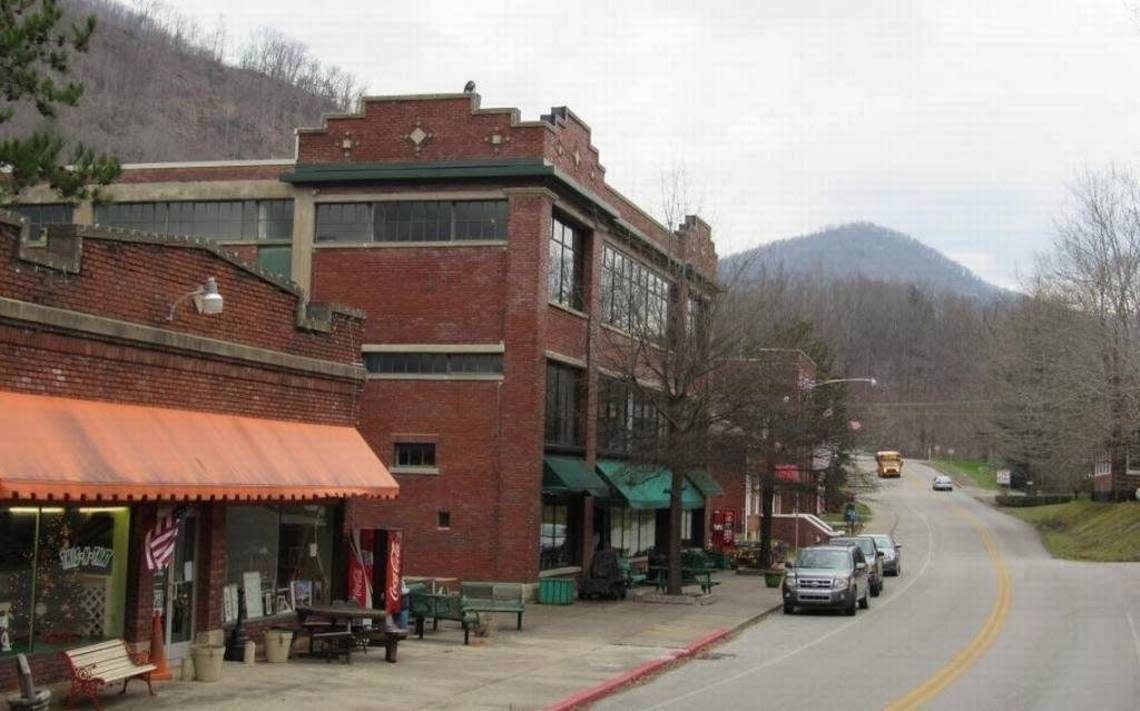My Ky. hometown made international news for its absurd number of dollar stores | Opinion
The cat is out of the bag for the folks of Olive Hill; my hometown gained international attention for the incredible amount of dollar stores in and around the rural Kentucky town.
The Daily Mail, a British tabloid, published a story that takes a look at the phenomenon happening in Olive Hill, a town of roughly 1,500 residents, that boasts an impressive six dollar stores both inside and outside city limits.
With a good enough pitching arm you’re a stone’s throw away from a Dollar General or Family Dollar.
In an interview on “Fox and Friends,” Carter County Times newspaper editor Jeremy Wells estimated Carter County as a whole was home to 10 Dollar General stores and four Family Dollar stores.
Every time I go back home it’s like a new Dollar General has encircled the town, a warring army waiting to strike. My mom affectionately calls the Dollar General that sits along Tom T. Hall Blvd the “Olive Hill mall.”
As Forbes reported in May 2022, the company has an algorithm that utilizes data points like “population, population density, traffic patterns, speed limits and nearby destinations that attract visitors” to spit out a result and boom there’s a new store.
Why some algorithm has determined Olive Hill to be the ever-growing mecca of dollar stores I’ll never know.
I’m more interested in dissecting whether a town of under 1,500 residents needs this many dollar stores, and the pitfalls it could bring for towns like Olive Hill.
The growing specter of dollar stores
Dollar stores will remain even when all else has evaporated from this earth.
According to data from the company, there are more than 18,800 Dollar General stores in 47 U.S. states. Other data sets show the number of stores specifically in Kentucky to be nearing 700, ranking in the top 10 in the U.S.
Dollar General, as Forbes puts it, has been spreading like “hot gossip” across rural America. The company has become the biggest U.S. retailer by number of outlets; outnumbering McDonald’s, Starbucks or CVS, and putting a store within five miles of 75% of the population.
You could run to the ends of the earth and as the sun is about to eclipse the horizon one final time you will be greeted with a benevolent yellow glow.
It’s not just that dollar stores are taking over small towns, it’s also that people in these towns are relying on these stores for everyday necessities, and most crucially: groceries.
Even before the rising costs of food we’re seeing currently, studies have found more people are buying groceries at dollar stores.
A study published in the American Journal of Public Health (AJPH) found dollar stores were “the fastest-growing food retailers by household expenditure share, with rural growth outpacing growth elsewhere.”
As a whole, dollar stores still represent a “small share of national household food purchases,” the AJPH study states, but play an increasingly prominent role in “certain disadvantaged and rural communities.”
The Dollar General stores in Olive Hill do carry a small assortment of fresh foods and other groceries, but that’s really dwarfed by its larger selection of frozen, ultra-processed foods. Those are a point of convenience even if they are largely unhealthy.
The company, in a statement to the Daily Mail, said that while DG is “not a grocer” they provide “an assortment of foods and components of a nutritious meal.” I’m not sure if anyone has told management, but Dollar General is assuredly a grocer for many.
In Olive Hill, the Dollar General is synonymous with the grocery story. In fact, the “mall of Olive Hill” occupies the space of the town’s former grocery store, Superior Foods. The only proper “grocery store” left in town is the Save-A-Lot, but I think most know a trip there is largely wasted.
People then have to make a decision on whether to journey to Morehead or Grayson for more options. Depending on where you are in town, or up some holler, that can be quite the trip to make, assuming you can make, or if you can afford anything at another store.
A 21st-century company town
Enter: the dollar store. When you’re living in a region that has an ongoing food crisis and in a county experiencing an almost 20% rate of food insecurity, then you will, understandably, take what you can get.
And that’s the rub with dollar stores in rural towns: they are very much a lifeline to people. When your options are between something that’s not great for youversus nothing then it’s not a hard decision to make.
Plus you don’t want to be the guy that’s talking poorly about a place offering jobs, especially in a town with a poverty rate of 16% and other jobs being few and far between. I don’t fault anyone working a job they need, getting whatever money and benefits they need.
My ire lands squarely at a company that boasts a market cap of around $49 billion and whose former CEO left the gig with $183 million in total compensation. All that money yet the company can’t consistently keep stocked the few fresh foods it offers, or try to offer more?
I mean they might give being a real, proper grocer a go before expanding into banking and health care like they plan to.
The more I read about the trajectory Dollar General seems to be on, the more it strikes me as similar to a company town. Doesn’t sound like too much of a stretch when you consider companies like Amazon are already testing out the model themselves.
The coalfields of West Virginia and southeastern Kentucky are no stranger to the coal company town. Except instead of a company coming into an area and building a town around an industry, you have a company taking whatever hollowed out remains they can.
To note, Olive Hill was not a coal mining town; fire brick was the town’s economic engine.
Now the issue these company towns ran into is that even though they breathed life into an area, built things like churches, schools, libraries—everything was ultimately owned by the company.
And when one company calls the shots on what groceries you can buy, the money you get and spend (scrip), house you can lease, well you had better pray that company has your best interests at heart.

Sure, the dollar stores aren’t issuing their own money or selling houses, but the stranglehold they have on small towns as a primary grocer is, in my opinion, a point of concern.
What’s a small town to do?
The ever-forward march of time has not been kind to Olive Hill, nor many other rural towns that dot Kentucky
The town’s business district was largely decimated by flooding in 2010. Several businesses ultimately did not return; buildings left vacant, some still standing and others demolished. Other businesses did reopen and some new facades have shown up over the years.
Even the changes I have witnessed myself pale in comparison to the changes others have seen. In 1953, Olive Hill was home to 10 grocery stores!
My mom and aunts bemoan the lack of a grocery store in Olive Hill nowadays. I don’t believe a proper grocery store will ever come back to Olive Hill, lest it cross enemy lines into town.
I don’t think I’m far off in that assertion either. Take this example from North Tulsa, Oklahoma: Vanessa Hall-Harper is elected to the local city council specifically with the goal in mind of getting the area a grocery store.
North Tulsa already has 11 Dollar General stores and Hall-Harper, in an interview with NPR, claims a “big grocery store chain” was interested in coming to the area, but the large number of dollar stores popping up was a deterrent.
A 2018 report from the Institute for Local Self-Reliance found that while dollar stores often fill a need in poorer communities, evidence suggests “these stores are not merely a byproduct of economic distress. They’re a cause of it.” Resulting in the closing of actual grocery stores and eroding other future business prospects.
What is a small town to do to combat a rising tide of dollar stores? There’s a rise in towns enacting local ordinances that require new stores not be within a certain number of miles of another store among other restrictions.
In Fort Worth, Texas local officials passed an ordinance requiring new dollar stores to devote at least 15% of the floor area to fresh food and vegetables.
At this point, it may be too late for Olive Hill to make any change like that, and I may be presumptuous to even think that’s something people would be interested in. Surely, a seventh dollar store won’t up...right?
The company town of the eastern Kentucky coalfields are no more, although the towns themselves remain. From them we learned the dangers present when one person, one company, has a say in controlling everything a person needs to live; it was an effective tool of crafting an obedient worker hesitant to bite the hand which feeds it.
In a similar way, the dollar stores popping up over rural America present a similar conundrum: do we dare fight back against what we have in order to get something better or should we be thankful instead for the benevolence we have been shown?
This is what I believe: Olive Hill, and the many, many towns like it deserve more than what can be offered by even one million dollar stores.

Andrew Henderson is Herald-Leader’s audience growth producer.
